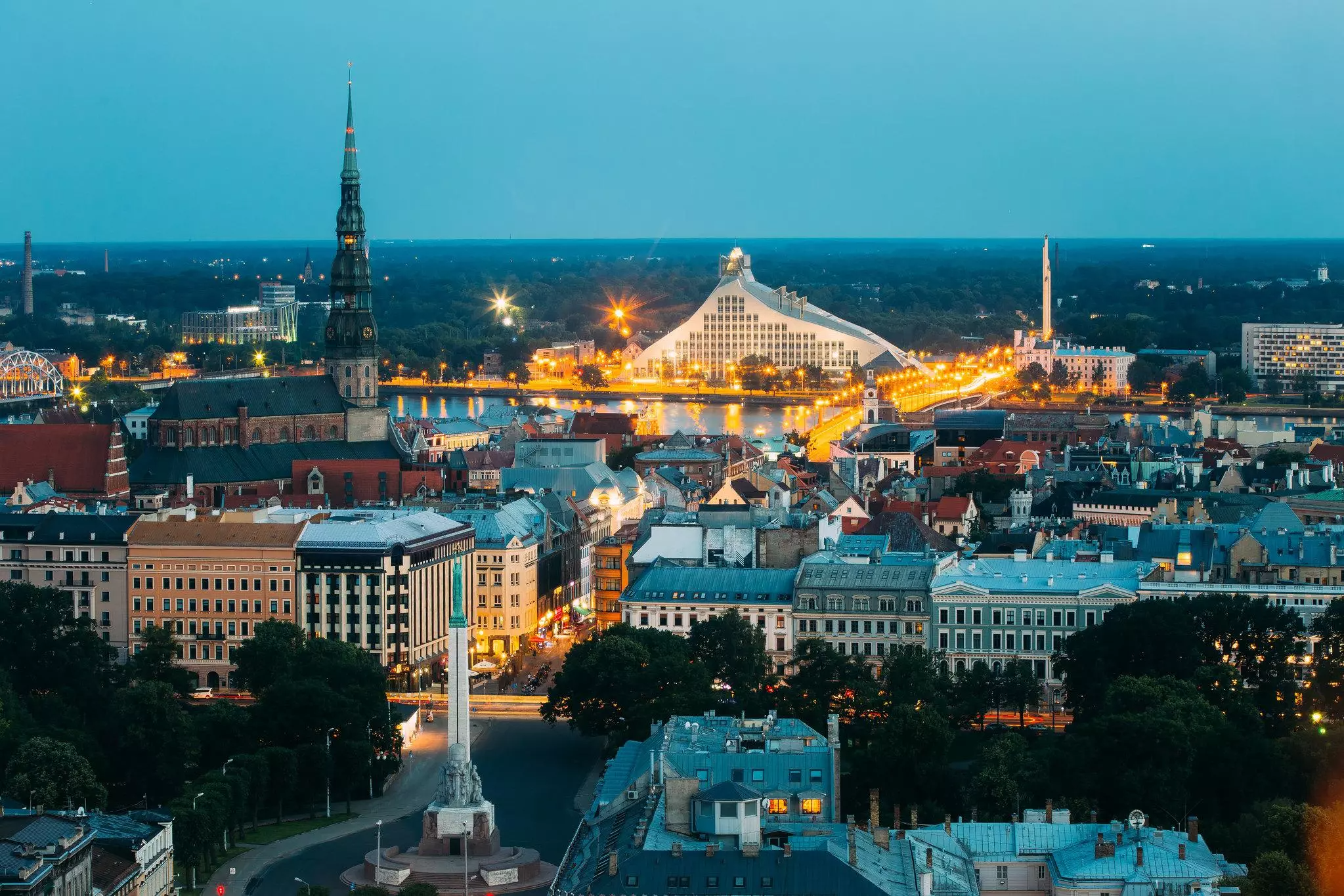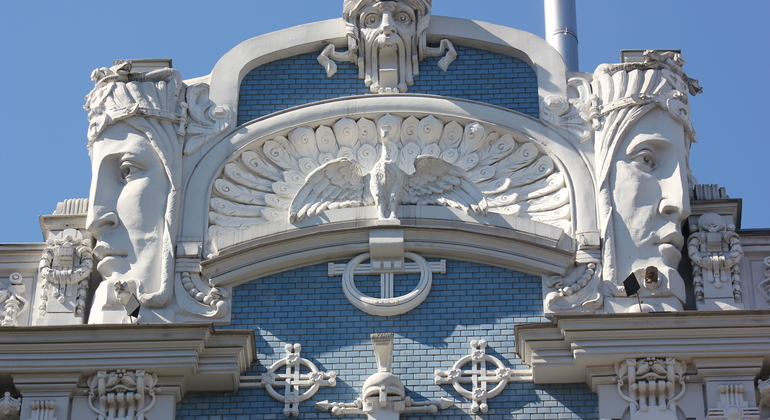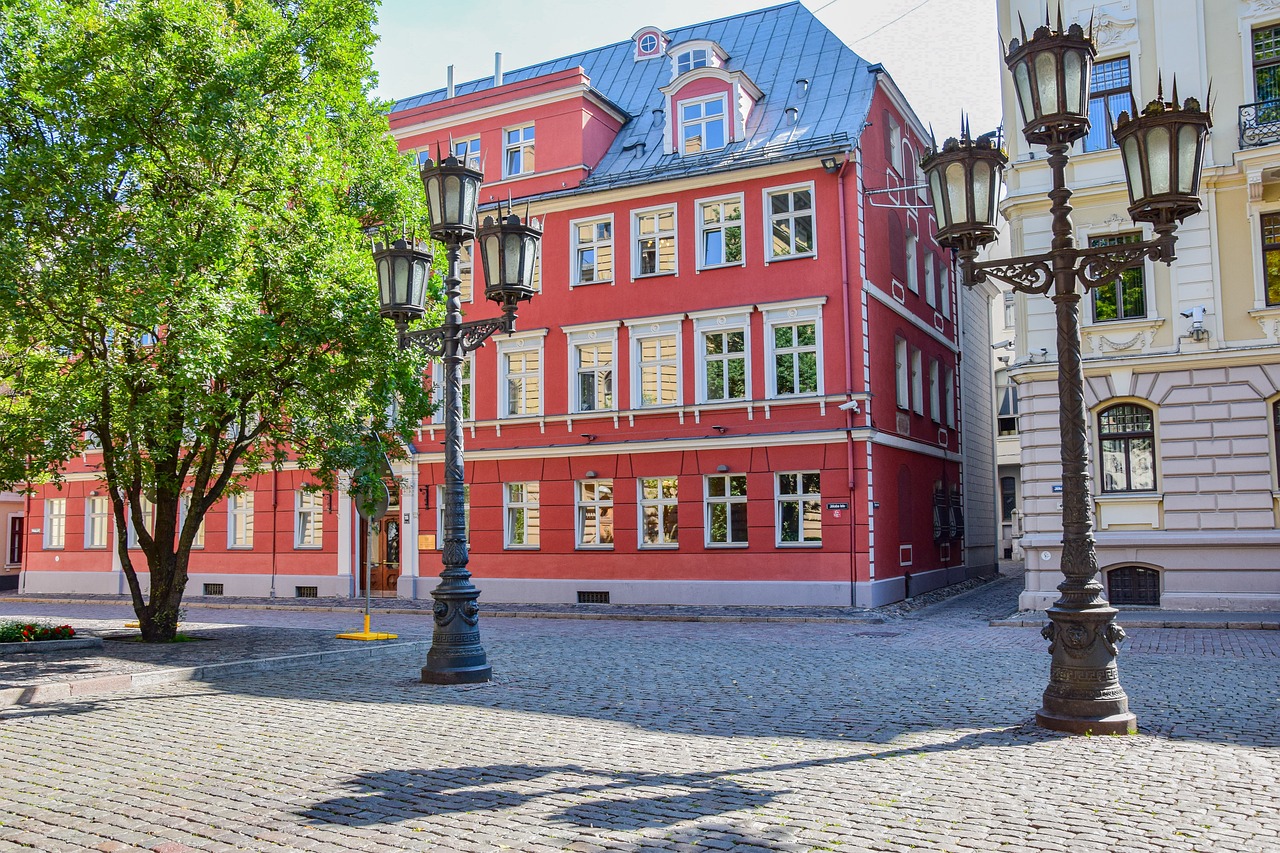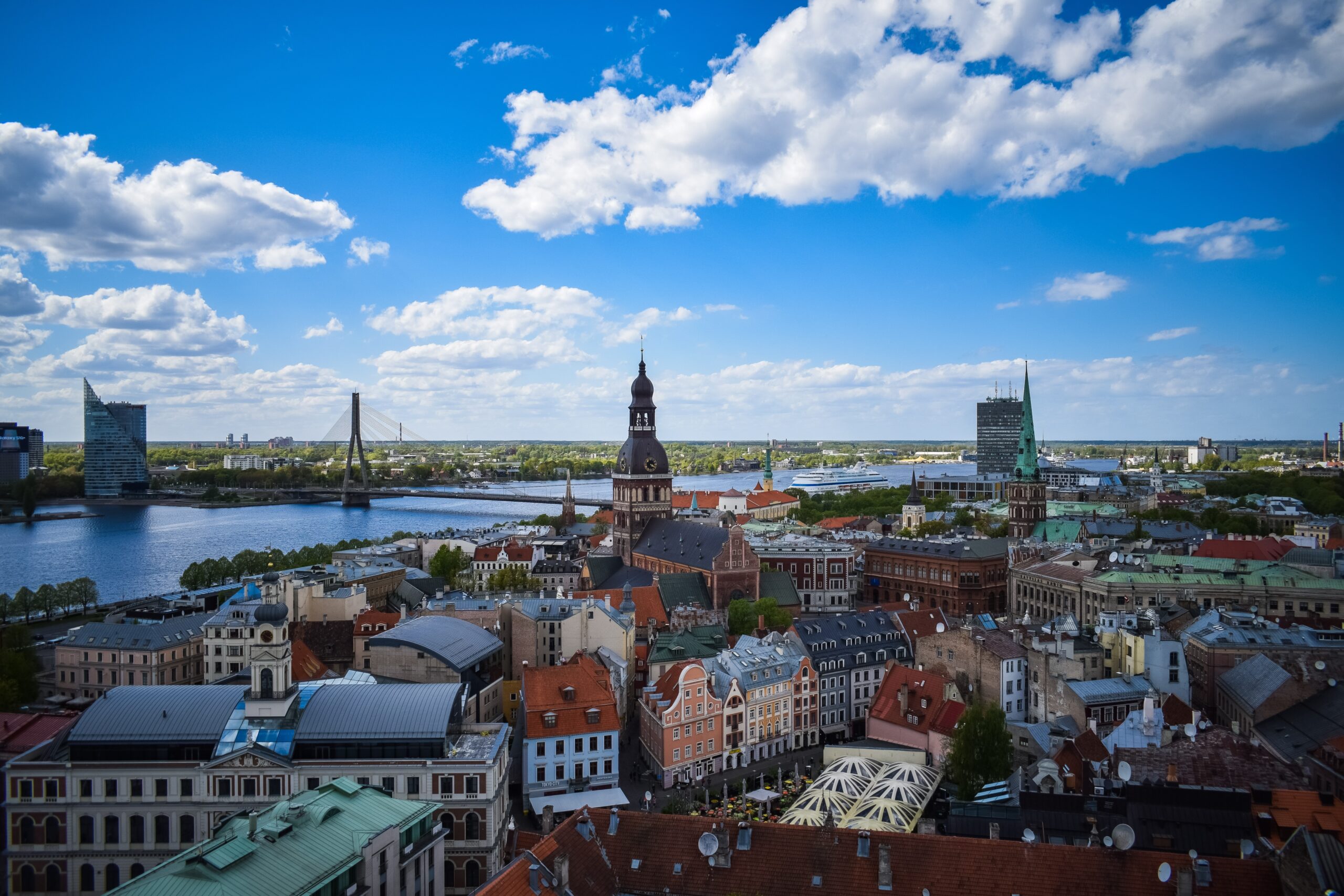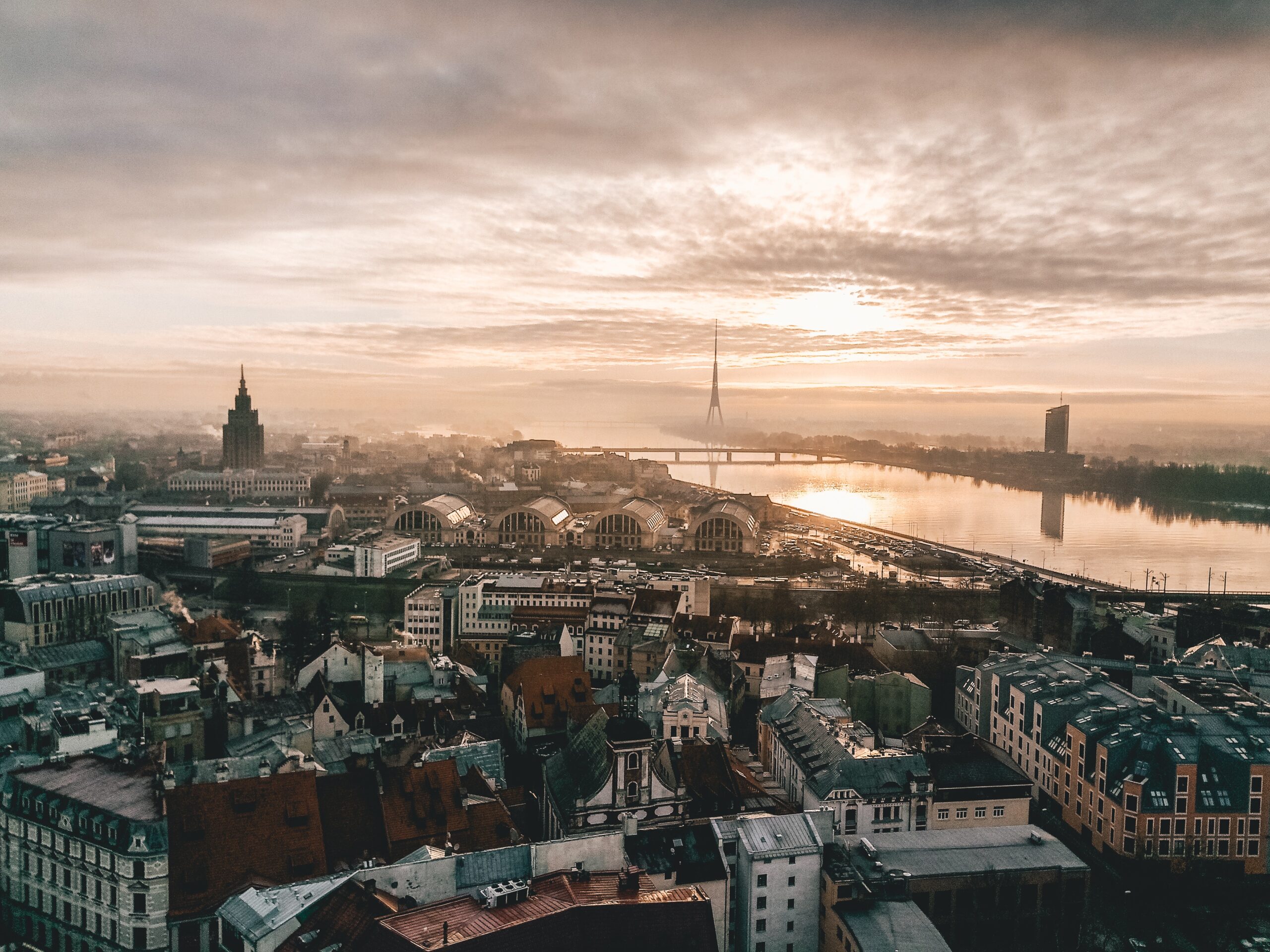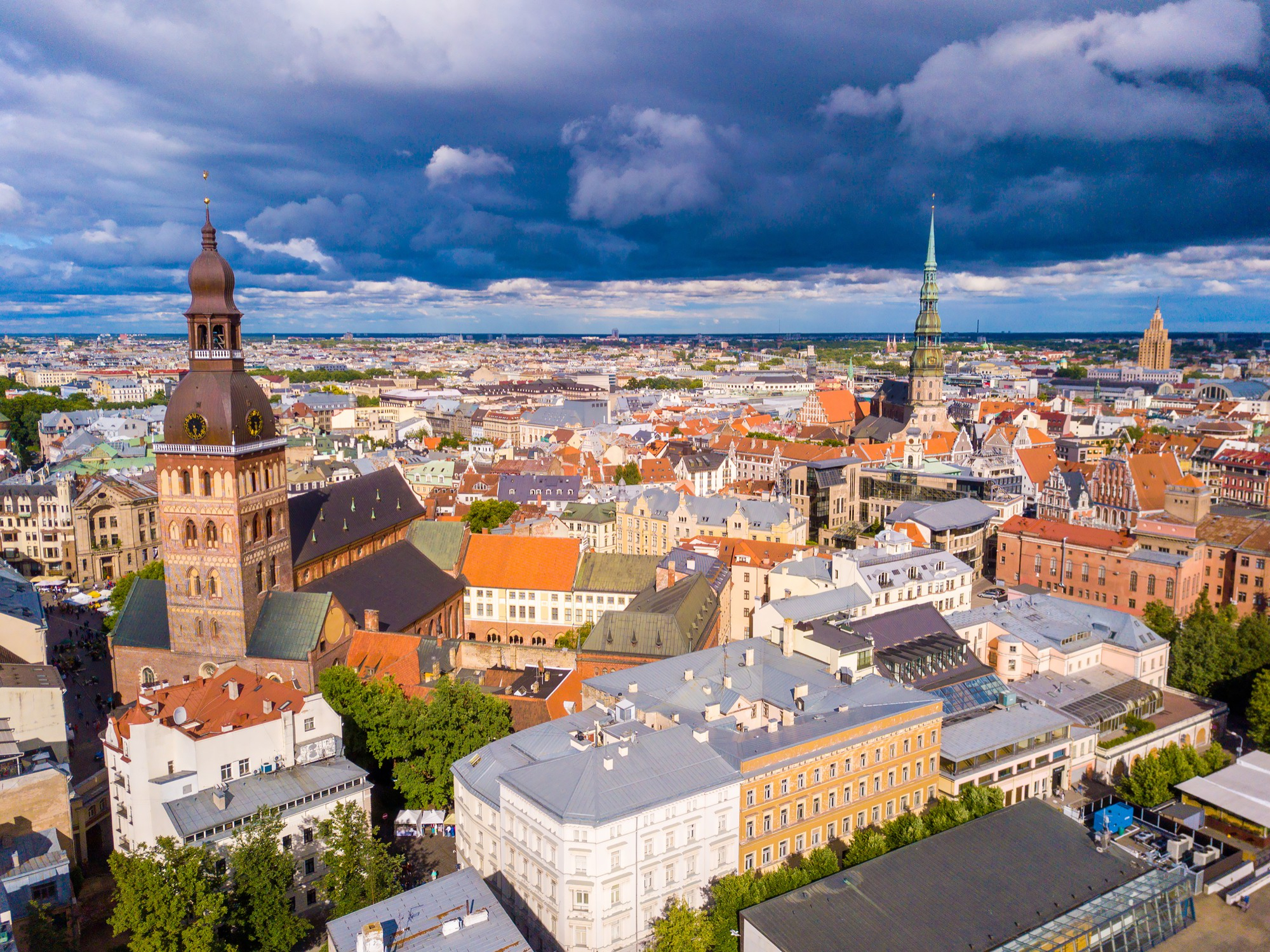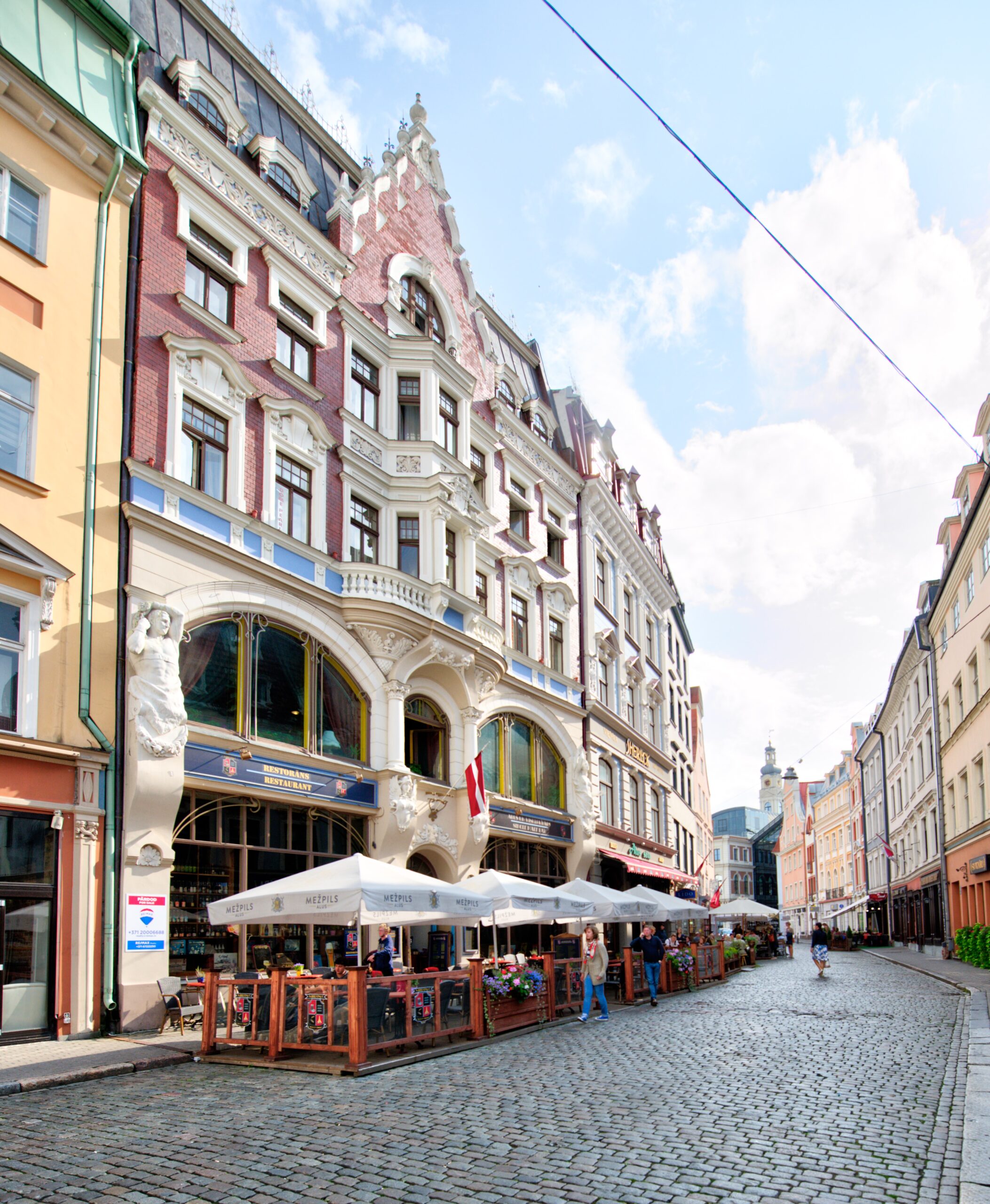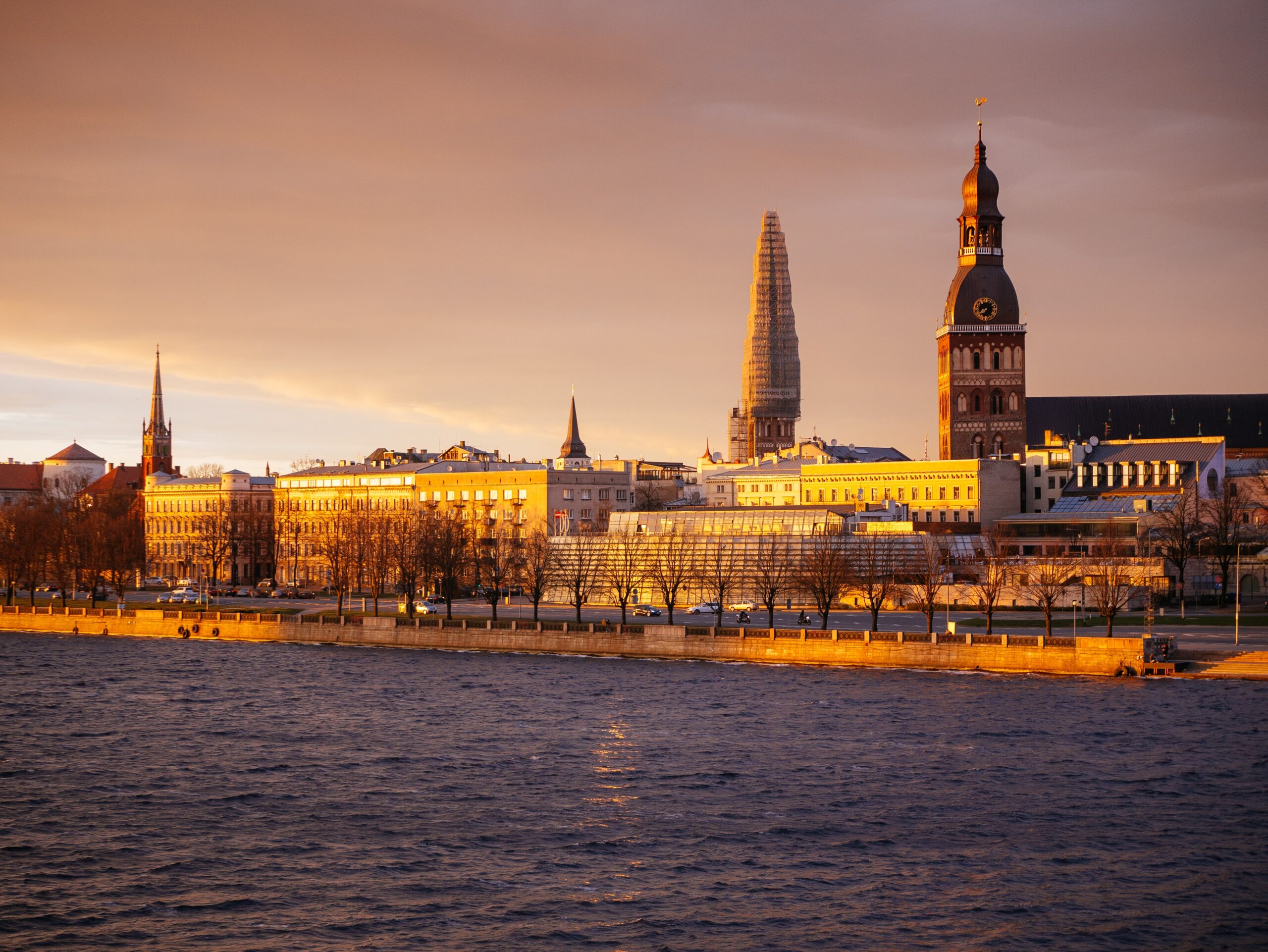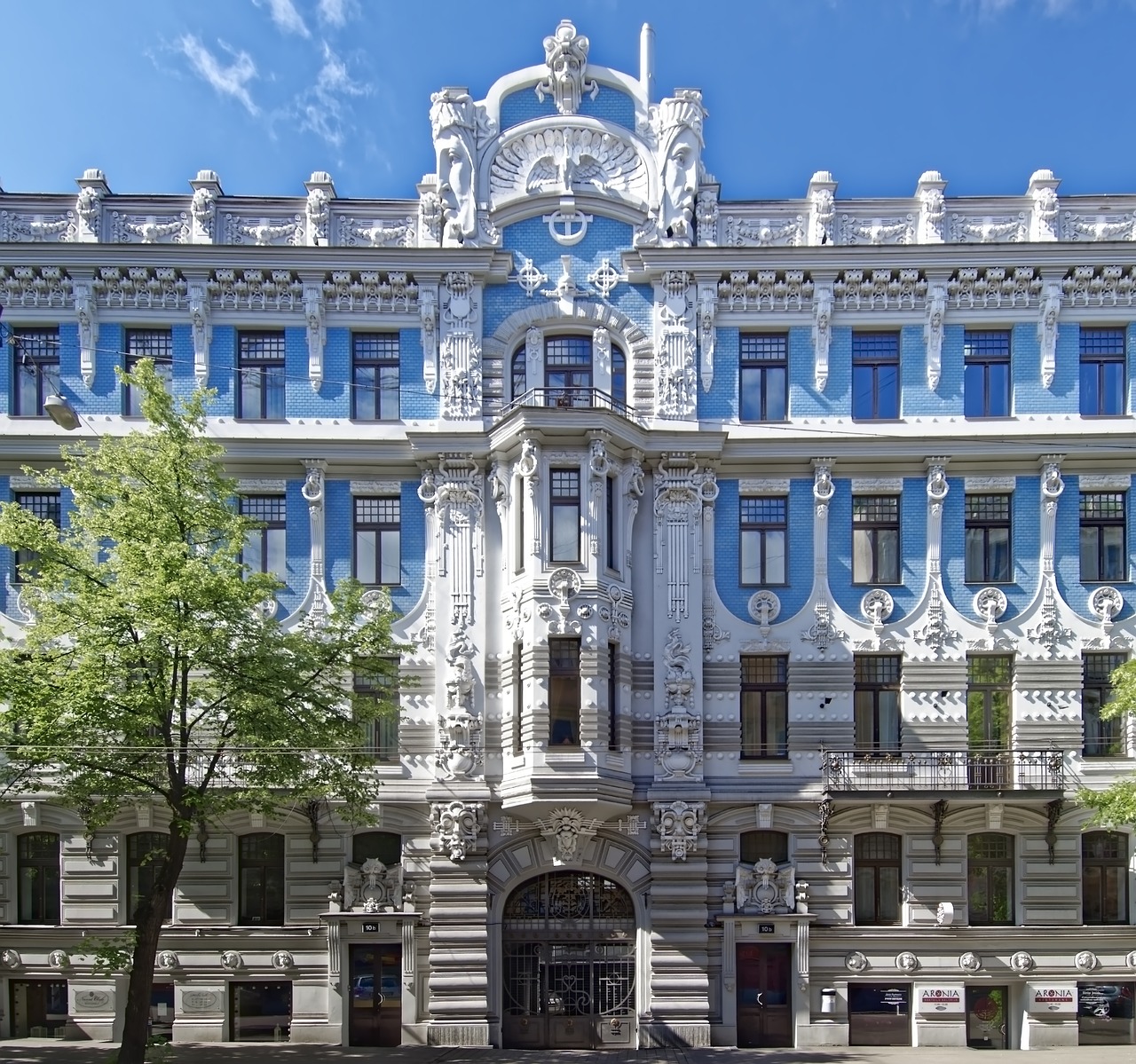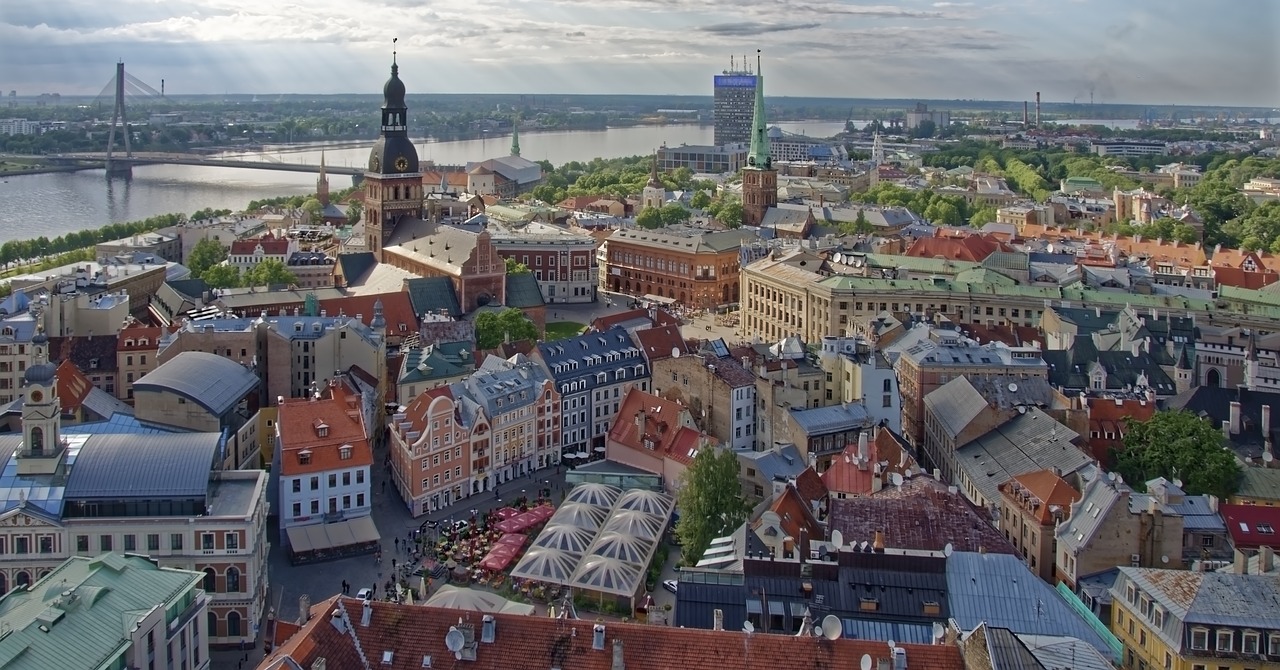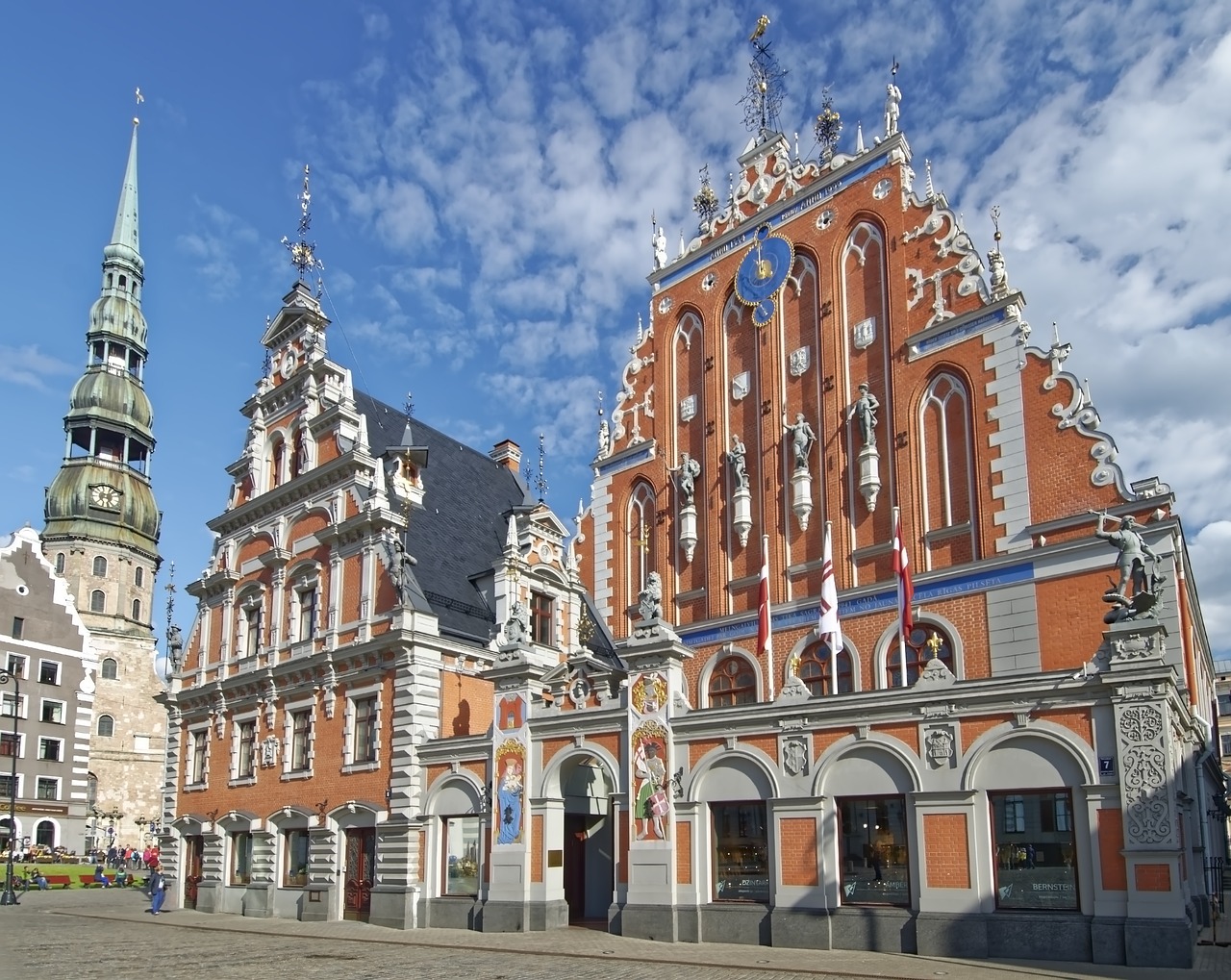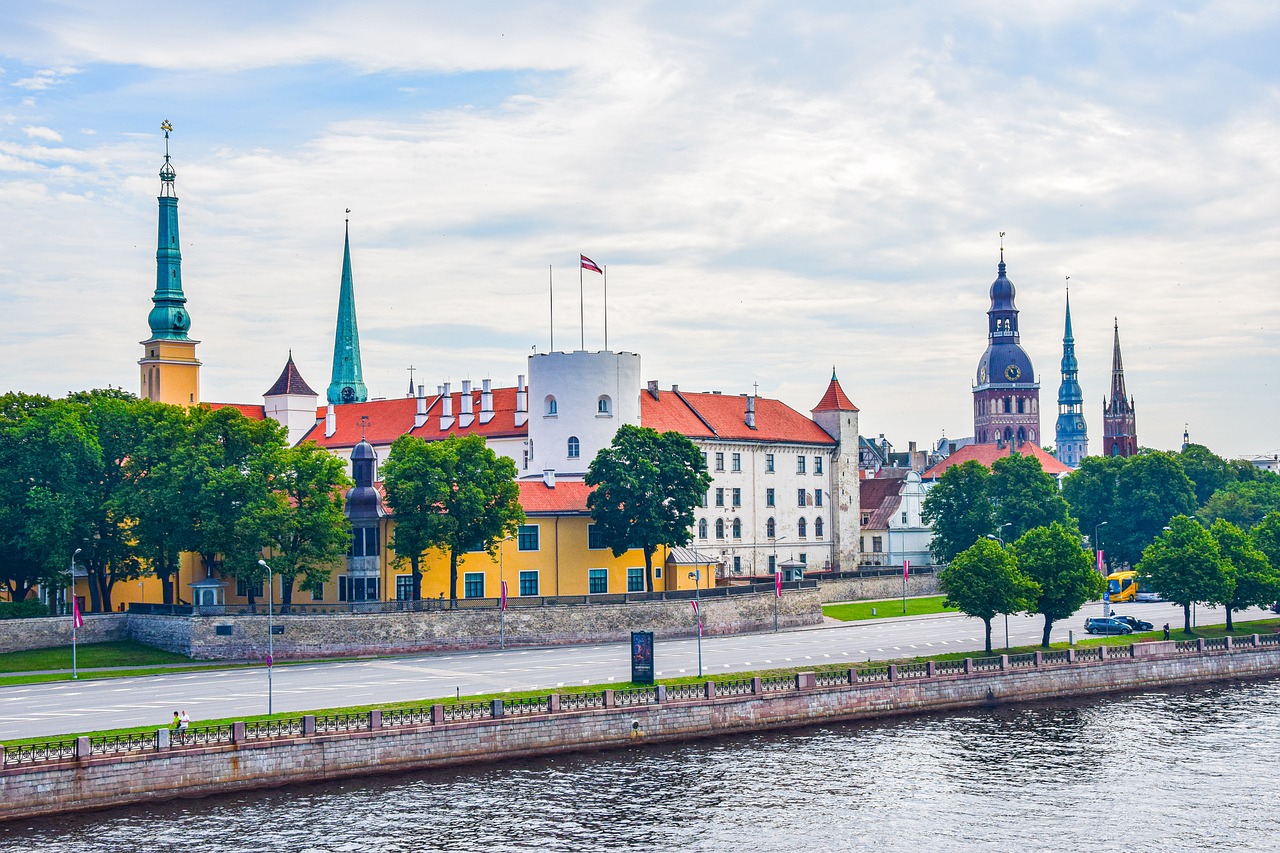About Latvia
An Overview of Latvia
Latvia is a country in Northeastern Europe, located on the eastern shores of the Baltic Sea, with a population of 1.8 million. The country is a haven of natural beauty, boasting vast forests that cover more than half of its territory, making it a perfect spot for hikers, nature lovers, and outdoor enthusiasts. These forests are vibrant ecosystems, alive with a variety of wildlife and plant species. They offer serene beauty for hikers and nature enthusiasts, who can find both peace and adventure on its trails. Latvia is also rich in lakes and rivers that weave through the landscape, creating idyllic settings for canoeing, rubber rafting, fishing, or simply enjoying a peaceful moment beside the water. At the same time one can find interesting historical sites, such as the reconstructed Turaida medieval castle, as seen in the photograph below.

Latvia experiences four distinct seasons, each offering its own unique beauty and range of activities. Latvian summers are especially magical with the long days and short nights, and marked by the “Jāņi” Midsummer’s Eve solstice celebration. This ancient festival features bonfires, singing, and dancing, celebrating the year’s longest day. In contrast, winter turns Latvia into a snowy paradise, with ice-covered rivers and the landscape wrapped in serene beauty, ideal for winter sports or enjoying the scenic views. Autumn and spring bring their own charm with vibrant fall leaves and blossoming signs of new life in the spring.
This rich mix of natural beauty and seasonal variety sets the stage for Latvia’s cultural practices and traditions, enhancing the experience for visitors.
Latvia cherishes its vibrant cultural heritage, expressed through music, dance, and festivals that honor the nation’s history and identity. The Latvian Song and Dance Festival is a significant cultural event, held every five years, where tens of thousands of singers, dancers, and musicians from Latvia and beyond come together in participation of the nation’s rich traditions and cultural unity. This festival is recognized as a part of the UNESCO Intangible Heritage of Humanity. It is more than an artistic display, it is a powerful manifestation of the Latvian spirit, with folk songs and dances that have been handed down through generations. But the festival also includes contemporary choreography and compositions by world-reknown Latvian composers. In the photographs below one can view a moment of rest for the folk dancers, as well as the outdoor Latvian Song Festival stage that holds 18,500 singers!
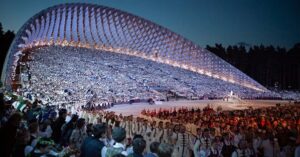
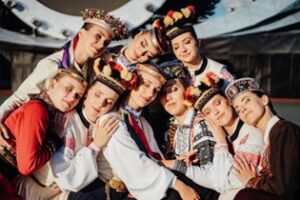
Folk music and dance are deeply embedded in Latvian culture, acting as a link to the past and a source of national pride. These traditions are celebrated in daily life and on special occasions, with families and communities sharing stories, songs, and dances that have shaped Latvian culture for centuries. The ongoing preservation and promotion of these art forms are crucial for maintaining the nation’s identity and heritage.
Among Latvia’s interesting historical sites is the town of Kuldiga, which is located in the western part of Latvia, and which has recently also gained recognition as a UNESCO World Heritage site. This picturesque town is famous for its historical center, reflecting 17th and 18th-century architectural styles, making it a living showcase of Baroque and Rococo. The old town, a cultural heritage site, features cobblestone streets and ancient buildings that invite visitors to travel back in time. Quite often in recent years Kuldiga has become the location of various Western European and even Japanese films that require a historical backdrop.
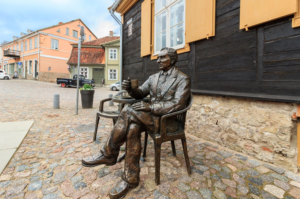
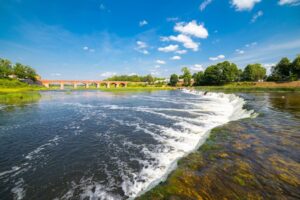
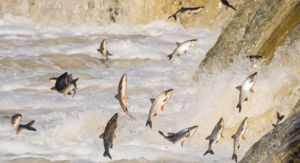
A major natural highlight of Kuldiga is the waterfall Ventas Rumba, Europe’s widest waterfall. Stretching across the Venta River, this natural marvel is not only a stunning sight but also significant for nature lovers and fishermen. Every spring it becomes a scene for the spectacular sight of fish leaping over the falls, attracting both locals and tourists. The area around the waterfall is perfect for outdoor activities like hiking, picnicking, and enjoying nature’s
Liepaja, on Latvia’s Baltic coast, is fondly known as the “City of Wind.” This nickname refers not just to its breezy weather but also to the city’s dynamic atmosphere. Liepaja’s maritime legacy is a core part of its identity, with its beaches and historic port significantly contributing to the city’s allure.

The city of Liepaja’s architecture blends historical and contemporary elements, with the unique Karosta district providing a peek into another era. Karosta, once a naval base for the Tsarist and later Soviet Navy, is now a tourist attraction known for its impressive, though deteriorating, buildings and the Karosta Prison, now a museum and hotel.
Liepaja boasts a vibrant music scene, home to the “Liepaja Symphony Orchestra,” one of the Baltic states’ oldest orchestras, and the “Summer Sound” music festival, attracting performers and music enthusiasts regionally. This mix of culture, history, and nature makes Liepaja a captivating place for those interested in experiencing Latvia’s coastal diversity.
The Rundale Palace, located in the southern part of Latvia, was designed by the Italian architect Rasrelli and constructed in the mid 18th century. The palace’s interior is as breathtaking as its facade, with richly decorated rooms and halls reflecting the opulence of the aristocracy of the time. Its French garden, a verdant haven with meticulously arranged flower beds, sculptures, and a serene pond, mirrors the palace’s elegance.
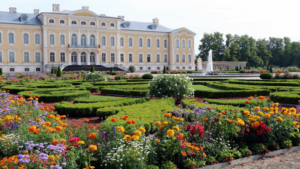
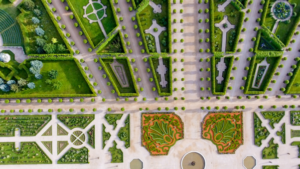
The seaside resort of Jurmala, just west of Riga city and stretching along the Gulf of Riga, is Latvia’s top seaside resort, famed for its natural beauty, therapeutic mineral springs, and vast sandy beaches. This resort town combines natural splendor with architectural grace, featuring distinctive wooden summer homes and modern spa facilities, offering a serene retreat for relaxation and wellness.
Jurmala’s appeal lies in its tranquil beach ambiance, a short drive from the capital, Riga. Its long, white beaches are ideal for sunbathing, swimming, and enjoying stunning sunsets. The Dzintari Forest Park, with its pathways, playgrounds, and outdoor concert hall, provides a leisure and entertainment haven.
Jurmala is also known for its spa and wellness culture, with many resorts offering treatments utilizing the area’s unique mineral waters and mud, celebrated for their health benefits and attracting global visitors seeking rejuvenation.

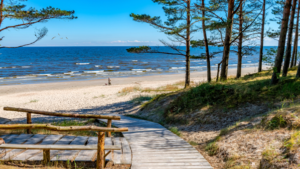

Latvia, with its blend of natural beauty, cultural heritage, and unique places like Kuldiga, Liepaja, Rundale Palace, and Jurmala, offers a rich and varied experience for travelers. Each destination reflects Latvia’s spirit, showcasing the nation’s history, traditions, and natural wonders. From its enchanting forests and historic towns to majestic palaces and serene beaches, Latvia invites exploration of its many treasures. Whether attracted by cultural festivals, nature’s tranquility, or historical grandeur, Latvia provides an unforgettable journey through its landscapes and legacies.
